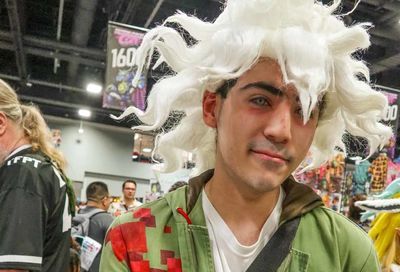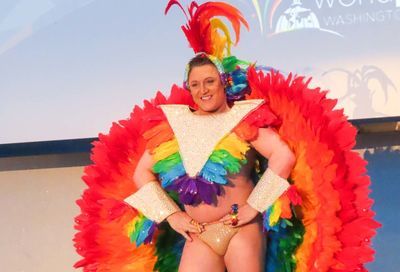Court Sense (Opinion)
For a sport historically open to lesbians, professional tennis is behind the times when it comes to gay male athletes

When the gay former NBA player Jason Collins recently let it be known that he had been talking with a retired men’s professional tennis player who was considering coming out of the closet, I have to admit my reaction was mixed. Initially, it was an all-purpose “Yay!” to anyone who comes out of the closet by their own choice. It’s good to remember that all the world’s closets didn’t blow open on their own (or with the help of Gawker) after the arrival of marriage.
But my second reaction was a weary, “Really? Now?”
Let me explain my premature churlishness. Tennis is a very important sport to me. While I was a passable third baseman in Little League, tennis was the first (okay, only) sport I excelled at. I could hit a ball against my grandparents’ garage for seemingly hours. My sister and I both travelled around Kentucky playing tournaments and winning some trophies. I made the tennis team my freshman year of high school and went on to be the captain.
Unsurprisingly, I followed professional tennis the way my peers followed basketball. I had my idols (Bjorn Borg, Mats Wilander) and my villains (Jimmy Connors, John McEnroe, both of whom remain villains to me). Tennis was a vital and important part of my young — and closeted — life.
While there were obviously no openly gay male players at that time, I did grow up in the age of pioneering transgender player Renee Richards, the outing of Billie Jean King, and the legendary Martina Navratilova, all of whom were paving the way for the future LGBT pros to come out, both male and female.
I’d always thought that men’s tennis would be on the forefront of openly gay male athletes. As pro sports go, it’s one of the most egalitarian and progressive. The biggest tournaments in tennis are dual-gender events, with men and women sharing courts, television time, and equal prize money — try finding another major sport that does the same year in and year out. (Hint: You won’t.)
The presence of lesbian players on the women’s tour has become a simple matter of fact — outside of the rare player from a country like Ukraine giving a boorish interview about all the lesbians, it’s pretty unremarkable. Demonstrably heterosexual male players like Andy Roddick and James Blake have worked with Athlete Ally to help open sports to young LGBT players.
In fact, the trailblazing for gay inclusion among the men has really been about allies. A good example recently is Andy Murray, the world number three player who last year hired Amelie Mauresmo — the former No. 1 women’s player who came out publicly at 19 years old — as his coach. That raised eyebrows (and exposed some lingering sexism in both the media and locker room) but it left no doubt about Murray’s thoughts on how tennis should be open to everyone.
So despite being a sport with a history of (hard fought for) equality and top athletes who are publicly supportive of LGBT athletes, tennis has yet to see an openly gay male player. Even pro football and basketball have seen players, such as Collins and Michael Sam, come out. Where I’d expected the individual nature of tennis — no coaches or owners to decide who plays and who doesn’t — to encourage a gay pioneer, it still hasn’t happened.
We can’t dismiss the pressure that comes with coming out while pro — young players crumble all the time under new found fame, so it may be that the idea of being first is too much of a distraction for a player considering coming out. Still, it’s dispiriting that with so much progress at so rapid a pace, male sports — even the relatively progressive ones — remain stubborn to change.
As for the possibly-soon-to-come-out former player, I’ve seen plenty of speculation as to the identity. Lord knows gay tennis fans have had a long time to ponder the question of who may be. I have a couple of somewhat educated guesses, one of whom would be a very big deal but also not likely. Until the news finally breaks, we’ll just have to keep playing the guessing and waiting game on court.
Sean Bugg is a writer and former editor of Metro Weekly. Follow him on Facebook and Twitter (@seanbugg).
Support Metro Weekly’s Journalism
These are challenging times for news organizations. And yet it’s crucial we stay active and provide vital resources and information to both our local readers and the world. So won’t you please take a moment and consider supporting Metro Weekly with a membership? For as little as $5 a month, you can help ensure Metro Weekly magazine and MetroWeekly.com remain free, viable resources as we provide the best, most diverse, culturally-resonant LGBTQ coverage in both the D.C. region and around the world. Memberships come with exclusive perks and discounts, your own personal digital delivery of each week’s magazine (and an archive), access to our Member's Lounge when it launches this fall, and exclusive members-only items like Metro Weekly Membership Mugs and Tote Bags! Check out all our membership levels here and please join us today!





















You must be logged in to post a comment.